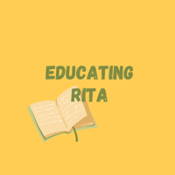
Overview
Synopsis
Educating Rita is a witty yet poignant look at a working class woman’s attempts to change her social circumstances through pursuit of an Open University qualification. Rita is a twenty-six-year-old working-class hairdresser, married to Denny and living round the corner from her family. She has enrolled on an Open University course in an attempt to discover herself and better her circumstances. Rita has realized that she is out of step with most of her family and friends as she is not prepared to settle for what she has already got. Her tutor is Frank, a frustrated poet and academic, who works as a lecturer at a university. He is an alcoholic and, to begin with, is less than enthusiastic about taking Rita on as a student. However, he is fascinated by her take on life and realizes that she has academic potential. Under his cynical guidance, Rita grows in confidence and understanding.
After leaving her husband, Rita moves in with a fellow student and wholeheartedly embraces the bohemian, student lifestyle, much to Frank’s dismay. Frank cannot stand the pretentious, pompous attitudes of her new friends, but Rita does not understand his cynical reaction. With her newfound knowledge, Rita starts to distance herself from Frank, believing him to be bitter and unappreciative of his poetic talent. She becomes more arrogant and false in her behavior, even altering her accent to try and fit in with the middle class students. However, after her flatmate attempts suicide, Rita realizes how ridiculous her lifestyle has become. She takes her exam and passes with flying colors. After being reported for lecturing whilst drunk, Frank faces a forced two-year sabbatical in Australia. He and Rita part as friends, with the future unclear for both of them, yet full of possibilities.
Educating Rita is one of Willy Russell’s best known plays, drawing on every emotion to produce a profoundly moving, yet also hilarious two-hander.
Show Information
Context
Willy Russell’s Educating Rita premiered in 1980 at The Warehouse Theatre in London (now the Donmar Warehouse) before transferring to the West End, where it won the Olivier Award for Best New Comedy. The play was written during a period in Britain when issues of class, access to education, and social mobility were at the forefront of public debate. Russell, himself from a working-class background in Liverpool, drew on his own experiences of entering the world of literature and education as an
to read the context for Educating Rita and to unlock other amazing theatre resources!Plot
Songs
A song with an asterisk (*) before the title indicates a dance number; a character listed in a song with an asterisk (*) by the character's name indicates that the character exclusively serves as a dancer in this song, which is sung by other characters.
Monologues
Scenes
Key Terms
An adaptation is a reworking of a story from one medium or cultural context into another, such as turning a novel into a play or updating a classic play’s setting. Adaptations often reinterpret themes, characters, and style for new audiences. They can range from faithful recreations to bold reimaginings.
The clarity and articulation of speech by an actor or singer, critical for conveying emotion and meaning on stage.
An extended speech delivered by a single character, either to another character or the audience. Monologues are used for character development and to reveal inner thoughts.
A regional British dialect associated with Liverpool, often used in theatre to convey authenticity or working-class identity.
A two-hander is a play performed by only two actors, with the entire story built around their relationship, dialogue, and interaction. This format often heightens dramatic tension, as the focus is entirely on the dynamics between the two characters. Two-handers are common in intimate theatre settings, where subtle shifts in power and emotion drive the performance.
Wit in theatre refers to the quick, clever use of language to create humor or reveal deeper truths about characters and situations. It often relies on sharp wordplay, irony, or unexpected turns of phrase to keep audiences engaged. Wit is commonly found in comedies and serves both to entertain and to highlight human flaws in a lighthearted way.
Videos
Quizzes
Themes, Symbols & Motifs
THEMES
Education and Self-Discovery
At the
to read about the themes, symbols and motifs from Educating Rita and to unlock other amazing theatre resources!Quote Analysis
_“See, I wanna discover myself first… do you
to read our analysis of select quotes from Educating Rita and to unlock other amazing theatre resources!